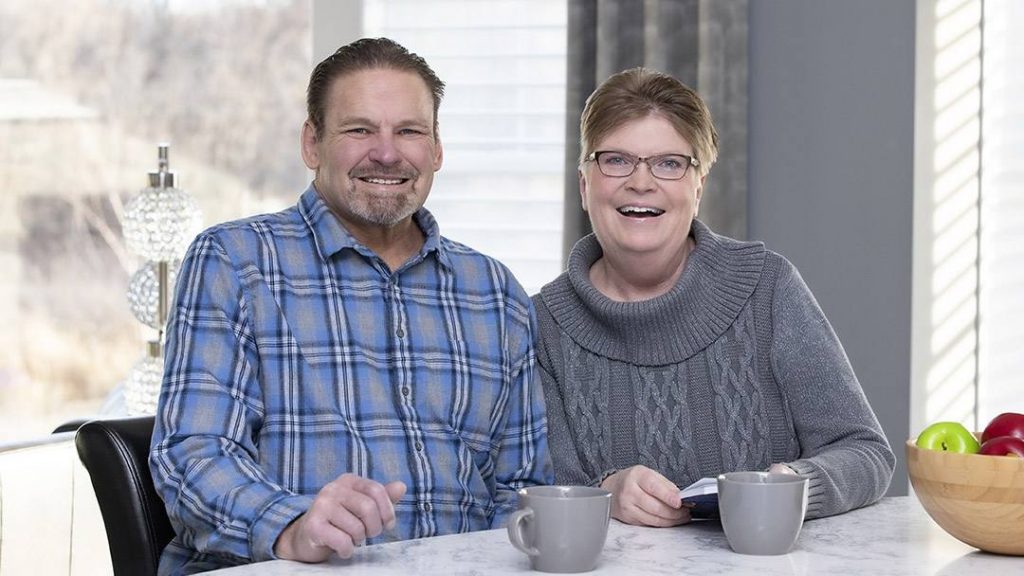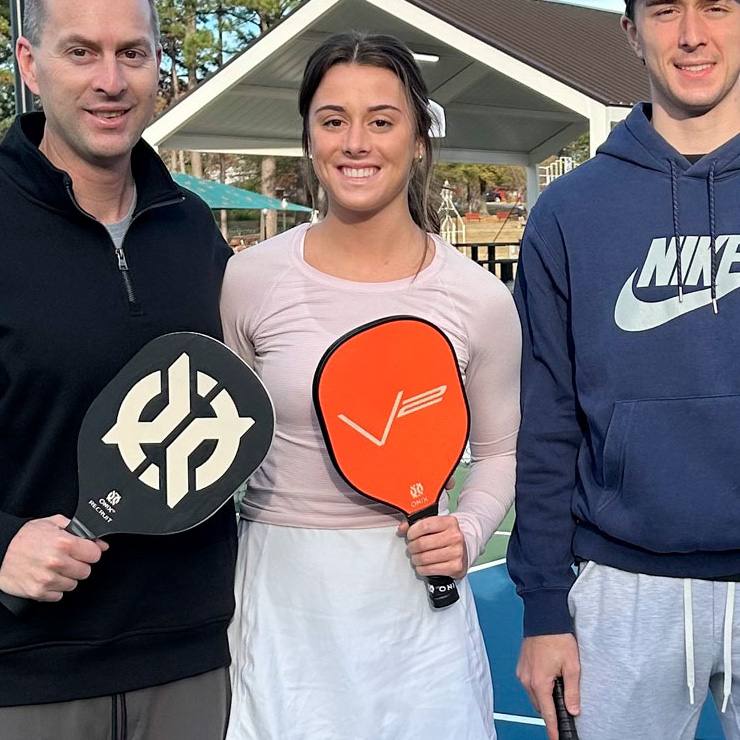
When Bob and Kelly Rodenberg wed 10 years ago, they hadn't a clue how their pledge to love one another through sickness and health would play out. But when they both developed incurable illnesses, their vows took on greater significance. Today, thanks to the work of committed Mayo Clinic care teams, the pair continues to live out their promise.
As spouses, Bob and Kelly Rodenberg have a lot in common. They share a home, a love of travel and a sense of humor. But the couple has something else in common, too: incurable illnesses that have profoundly affected their lives.
Bob has a rare blood disorder called POEMS syndrome. Kelly has glioblastoma — an aggressive type of brain tumor. Rather than allowing their conditions to cloud their days, however, the couple has chosen to channel their energy toward compassion and gratitude. Tops among the things they're thankful for is the expert medical care they've received at Mayo Clinic that has put both their conditions in remission and allowed them more time together.
"We feel so fortunate because Bob got assigned a doctor who actually wrote the book on POEMS, and I was fortunate enough to have as my surgeon a professor of neurosurgery, and he's been doing this in his field for 30 years," Kelly says. "You don't have those types of connections or miracles that happen (elsewhere) as much."
Kelly and Bob have both undergone extensive treatment at Mayo Clinic in Rochester, including chemotherapy and a stem cell transplant for Bob, and brain surgery and chemotherapy for Kelly. And while they didn't envision their lives and relationship taking on the tenor of chronic disease, walking similar paths has deepened their understanding of each other's journey.
"If there is a silver lining in all of this, it's that we've been in each other's shoes and maybe have a little more compassion for what the other is going through," Kelly says.
Uncovering a rare disorder
Bob was 52 when the first symptoms of POEMS struck. Very quickly, his feet became so painful that even the feel of a bedsheet was unbearable. "My feet were very hot, very red, very swollen, extremely painful, and it was difficult to walk," Bob says. In addition, flares of neuropathic pain streaked up and down his legs. His energy plummeted.
"All of these symptoms were odd. Of course, at the time, I had no idea that they were related," Bob says. "Ultimately, it drove me to the ER."
Bob was hospitalized for 14 days while he underwent an array of tests, including a bone marrow biopsy. Results revealed Bob's blood counts were drastically off, and his spleen was enlarged. His eyesight had been affected and his lung capacity diminished. Throughout Bob's hospitalization, his doctors were stumped as to the cause of his symptoms until Kelly's mother made a comment about changes in Bob's skin. That led Bob's physician to suspect POEMS. "She said she was 90% sure I had POEMS syndrome and wanted me to go to Mayo to get it checked out," Bob says.
"You get an amazing feeling when you are (at Mayo Clinic). It's not your typical medical center. It's just different."
Bob Rodenberg
At Mayo Clinic, the diagnosis was confirmed. In people who have POEMS, the plasma cells — a component of bone marrow — increase and multiply abnormally. The overgrowth of plasma cells triggers an avalanche of issues, including abnormal blood counts, endocrine problems, enlarged organs, nerve damage, numbness and tingling, followed by loss of motor function in the limbs and difficulty breathing.
Angela Dispenzieri, M.D., a Mayo Clinic hematologist who was part of Bob's care team, emphasizes the importance of a prompt diagnosis for people with POEMS. "The longer patients go, the more disabilities they will have, and the worse and worse they get," Dr. Dispenzieri says. "Once you have a diagnosis, we have a number of therapies to treat it."
For Bob, therapy included intense chemotherapy to kill the abnormal blood cells, followed in 2012 by an autologous stem cell transplant to regenerate his bone marrow.
Appreciating steadfast care
Bob's stem cell transplant went off without a hitch, and his symptoms gradually subsided. Every three months for several years, Bob returned to Mayo Clinic in Rochester for follow-up testing, eventually transitioning to annual visits.
"My only option was to go to Mayo Clinic and make sure that everything was treated right, which it was," says Bob, who's only lingering symptoms are neuropathy and subtle foot pain.
Today, Bob remains thankful for the care he received at Mayo Clinic. "You get an amazing feeling when you are there," he says. "It's not your typical medical center. It's just different."
Among those differences is his Mayo care team's steadfastness in monitoring and preparing for a POEMS recurrence. In addition to regular follow-up appointments, Bob's team has stored a bag of his stem cells — collected during his transplant — in case he needs another transplant in the future. "It certainly can come back. There's no doubt about that," Bob says.
While there is no cure for POEMS syndrome, patient outcomes have dramatically improved over the past decade. "There are a lot of POEMS patients who do amazingly well for decades, but we don't promise or suggest what we're doing is curative," Dr. Dispenzieri says. "We just don't think we're good enough at killing these plasma cells. That said, survival tends to be excellent."
Facing another threat
As the years after Bob's transplant accrued, the couple grew comfortable living without the direct threat of serious illness. That sense of ease was shattered in 2018, but not by a recurrence of Bob's disease.
Near the end of September 2018, Kelly awoke in the middle of the night to spasms in her left hand. A few days later, she started making numerous typos while working. The next day, she cut her thumb while slicing an apple and felt nothing. Believing a pinched nerve was to blame for the numbness, Kelly called her local provider, who advised her to go to urgent care.
"We knew a drive to Rochester for a second opinion was in order."
Kelly Rodenberg
At urgent care, Kelly was directed to see a neurologist. The neurologist performed an evaluation and recommended a brain MRI. The test revealed a golf ball-sized tumor, identified as a glioblastoma, above Kelly's right ear, between her brain's motor and sensory bands.
Kelly's neurologist recommended immediate surgical removal of the tumor. The surgery, Kelly was informed, posed a 50% risk of causing left-side paralysis. Those odds were too high, Kelly says. "We knew a drive to Rochester for a second opinion was in order."
Tackling a complex problem
At Mayo Clinic, Kelly and Bob met Michael Ruff, M.D., a neurologist, and Fredric Meyer, M.D., a neurosurgeon. Kelly's tumor was in a complicated location, says Dr. Meyer. It was involved with brain areas responsible for movement and sensation, and distinguishing movement from feeling. The tumor also involved neural projections, or axons, that control arm and leg movement. Despite that, Dr. Meyer was able to offer Kelly an alternate surgical approach that minimized the risk of paralysis.
"When we see a glioblastoma, the first question is, 'Why should you do a resection?'" Dr. Meyer says. "The fact is there is pretty good evidence if you're able to do an aggressive removal of the tumor, the prognosis is better."
On Oct. 30, 2018, Kelly had surgery to remove as much of the tumor as possible. "Maybe 98% of the tumor has been removed, which is my way of saying there are always some microscopic finger extensions going into other areas," Dr. Meyer says. "You need another treatment to try to kill the remaining tumor cells."
Even microscopic glioblastoma cells are extremely nefarious because of the way they communicate and proliferate. "We now believe that glioblastomas arise from stem cells in the brain, and we think that a population of cells within the tumor retain this ability to rapidly adapt to their environment," Dr. Ruff says. "Any sort of selective pressure we apply to it — chemotherapy, radiation, surgery — it's able to very rapidly adapt to that selective pressure."
What's more, glioma cells are networked together and can hijack normal brain activity to stimulate their own growth and movement. "Even with a gross total resection, we're not certain we're removing all of the tumor because these cells infiltrate the whole brain," Dr. Ruff says.
To combat that, Dr. Ruff recommended Kelly take two types of chemotherapy and undergo six weeks of daily radiation after the surgery.
Encouraging others
Since surgery, Kelly's imaging and bloodwork have shown no signs of cancer. Given the nature of her tumor, however, Kelly will continue with follow-up scans for the foreseeable future. "This is not a tumor you can cure. In the vast majority of cases, the tumor does recur," Dr. Ruff says. "I try to be upfront about that with patients, but also not destroy hope. We do see patients who live much longer than the average."
"Somewhere between radiation and chemotherapy, I ended up writing a book. It was wonderful therapy."
Kelly Rodenberg
As a way to process the experience, Kelly journaled about her thoughts and feelings. "Somewhere between radiation and chemotherapy, I ended up writing a book. It was wonderful therapy," Kelly says. "The more it came together, I thought, 'You know, there's a lot of people this might help.'"
Titled "There's Something Going on Upstairs — Learning to Laugh My Way Through a Cancerous Brain Tumor One Chemo Cycle at a Time," Kelly's memoir was released a year after her brain surgery. She gave a personalized copy to members of her Mayo care team.
"She's an incredible person," Dr. Ruff says. "I almost can't believe the resilience and strength these people have in the face of such a scary and uncertain thing. I'm continually blown away by that, and that's a part of the reason I do what I do. I get to see the best of people."
HELPFUL LINKS
- Learn more about POEMS syndrome.
- Read about glioblastoma.
- Check out the departments of Hematology and Neurology.
- Explore Mayo Clinic.
- Request an appointment.








